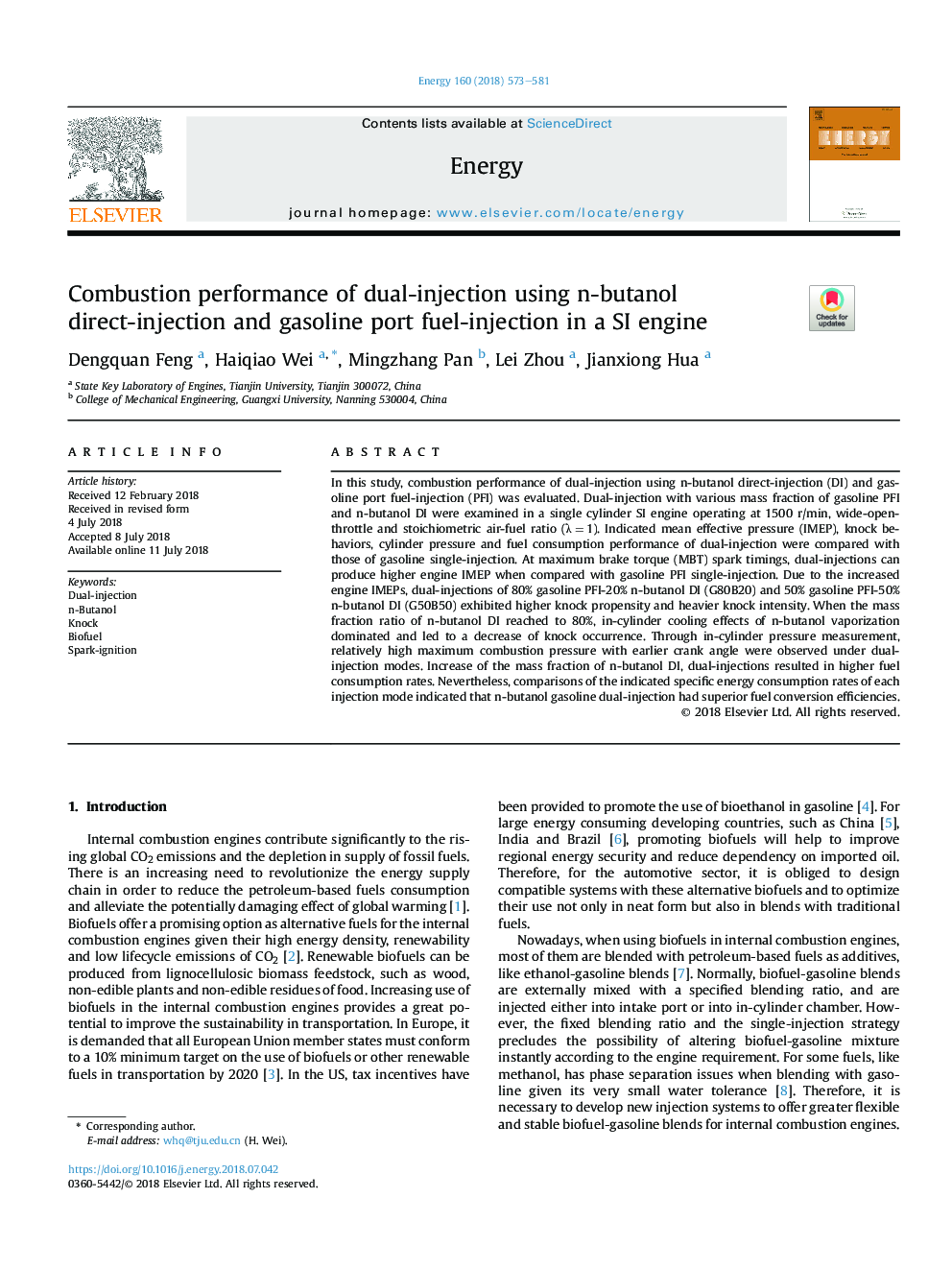| Article ID | Journal | Published Year | Pages | File Type |
|---|---|---|---|---|
| 8070971 | Energy | 2018 | 9 Pages |
Abstract
In this study, combustion performance of dual-injection using n-butanol direct-injection (DI) and gasoline port fuel-injection (PFI) was evaluated. Dual-injection with various mass fraction of gasoline PFI and n-butanol DI were examined in a single cylinder SI engine operating at 1500 r/min, wide-open-throttle and stoichiometric air-fuel ratio (λâ¯=â¯1). Indicated mean effective pressure (IMEP), knock behaviors, cylinder pressure and fuel consumption performance of dual-injection were compared with those of gasoline single-injection. At maximum brake torque (MBT) spark timings, dual-injections can produce higher engine IMEP when compared with gasoline PFI single-injection. Due to the increased engine IMEPs, dual-injections of 80% gasoline PFI-20% n-butanol DI (G80B20) and 50% gasoline PFI-50% n-butanol DI (G50B50) exhibited higher knock propensity and heavier knock intensity. When the mass fraction ratio of n-butanol DI reached to 80%, in-cylinder cooling effects of n-butanol vaporization dominated and led to a decrease of knock occurrence. Through in-cylinder pressure measurement, relatively high maximum combustion pressure with earlier crank angle were observed under dual-injection modes. Increase of the mass fraction of n-butanol DI, dual-injections resulted in higher fuel consumption rates. Nevertheless, comparisons of the indicated specific energy consumption rates of each injection mode indicated that n-butanol gasoline dual-injection had superior fuel conversion efficiencies.
Related Topics
Physical Sciences and Engineering
Energy
Energy (General)
Authors
Dengquan Feng, Haiqiao Wei, Mingzhang Pan, Lei Zhou, Jianxiong Hua,
